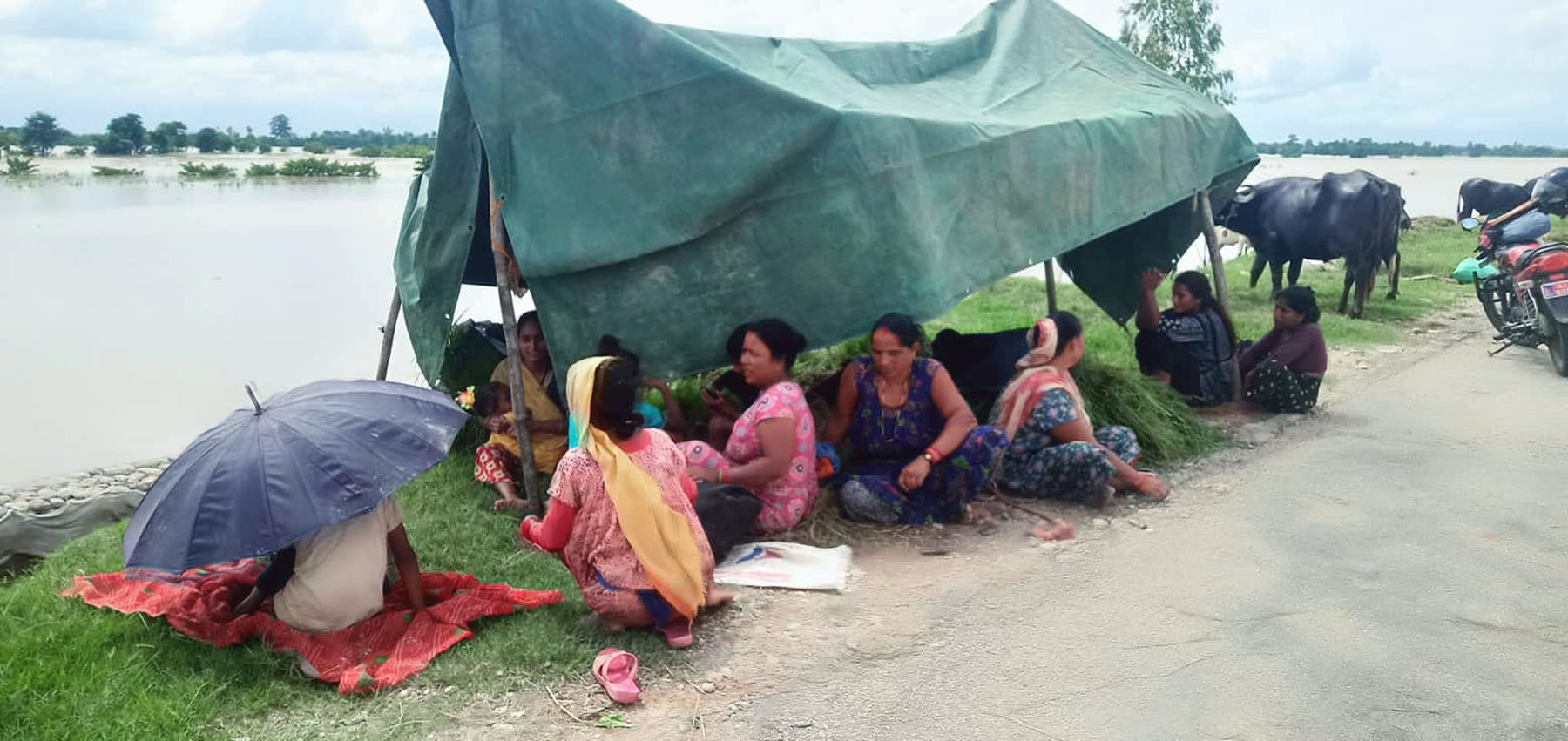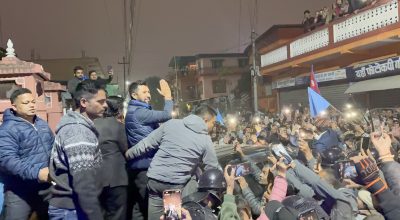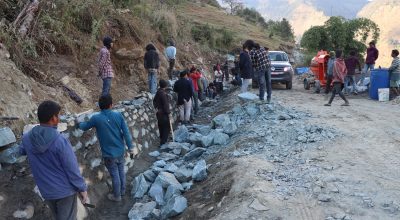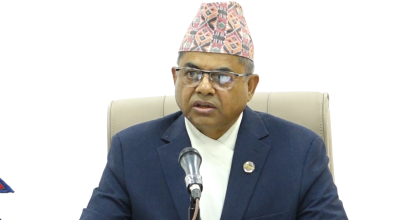
Narayan Dhungana
Kathmandu, June 2: As pre-monsoon starts, the government is set to be prepared for rescue and rehabilitation efforts through the integrated disaster management system.
The government’s initiative follows huge impacts caused by disasters in the past, reportedly due to lack of preparations to deal with natural disasters.
The disaster management system has been operated through joint efforts of the Ministry of Home Affairs and all other stakeholders.
Some work on the integrated system is underway while others are in the process, it has been said. To this effect, efforts are underway by developing related policies, laws, rules and procedure, according to the National Disaster Risk Reduction and Management Authority (NDRRMA).
The integrated system is believed to be much effective in the adoption of preparedness, disaster reduction, search and rescue efforts and rehabilitation.
Under the system, all related governmental and non-governmental organisations will make a common action plan relating to natural disasters, and human resources will be mobilised acting on the action plan, said the NDRRMA chief executive officer Anil Pokharel.
The draft of an action plan for monsoon-related disasters this year has been prepared, and preparations are underway to implement it after its endorsement from the executive committee next week, he said.

“This system prepared acting on our own experiences related to disaster response is a sample model in the South Asia. The system is called the ‘Integrated Monsoon Preparedness and Response Plan’ (IMPRP). Resources and workforce will be mobilised in line with the plan,” he said.
Low rainfall along with rising temperature is predicted this monsoon.
However, there is a need to be prepared for possible disaster risks, suggested experts. Preparedness for disaster management has been adopted based on past experiences relating to disasters and its impacts, geographical situation of the country, the impacts of climate change and the identification of possible risk areas, according to the NDRRMA.
Arrangements for temporary shelter for disaster victims and relief have been also made. Deputy Prime Minister and Minister for Home Affairs Narayan Kaji Shrestha, also chairperson of the executive committee of the NDRRMA, has recently directed authorities concerned to leave no stone unturned in the management of disasters this time.
Adequate preparedness should be adopted by even amending laws and rules, he said. A meeting of the executive committee of the NDRRMA on 12 May, 2023 directed all subordinate bodies and stakeholders to adopt preparedness for disasters.
Currently, the Disaster Risk Reduction and Management Act, 2074 BS (amended 2075 BS), and the Disaster Risk Reduction and Management Rules, 2076 BS are into operation.
The Disaster Preparedness and Response Directives, 2080 BS is being made. The Disaster Risk Reduction and Management Partnership Organisation Mobilisation Procedure, 2080 BS has reached the phase of its passage.
The government is at work to implement the Procedure soon after its endorsement, said Jitendra Basnet, spokesperson for the Ministry of Home Affairs. The NDRRMA has been tasked with the formulation of the IMPRP that has specified work allocation for the stakeholders to reduce possible losses caused by monsoon-related disasters this year.
The draft of the IMPRP has been prepared. The draft has specified tasks and preparedness adopted by the related sectors and provincial and local governments, and details of resources required in the search and rescue efforts.
The local government plays a greater role in search and rescue efforts, and the management of relief and accommodation for disaster victims. So, they must be well equipped with resources and workforces, according to experts.
Similarly, an action plan has been made to prepare the Disaster Risk Reduction and Management Partnership Organisation Mobilisation Procedure, 2080 BS through the meeting recently organised here.
The meeting was attended by the representatives of the Ministry of Home Affairs, the Ministry of Finance, the Ministry of Federal Affairs and General Administration, the Ministry of Health and Population, the Ministry of Women, Children and Senior Citizens, the National Planning Commission, the NDRRMA and the Social Welfare Council.
The Procedure, which is another mode of the Integrated Disaster Management System, will make the partnership sector responsible by allocating works, said the NDRRMA.

The ministry related bodies have started work accordingly. Preparedness to reduce disaster-caused losses in the infrastructural sector has started, said Keshab Kumar Sharma, secretary of the Ministry of Physical Infrastructure and Transport.
The Ministry has made a plan to mobilise machines from 136 places of the country, which will reach the incident site within 30 minutes and open blocked roads within two hours in case of road obstruction by monsoon-related disasters.
For this, 116 machines and 13 bailey bridges have been kept ready. The Nepal Army has kept its rescue teams ready along with helicopters.
Arrangements for the divers’ team of the Armed Police Force alongside required equipment to fight disasters will be made, and Nepal Police force will be mobilised in an integrated way.
Hundreds of volunteers have been on standby at each local levels, and they will be mobilised as per need, it has been said. On preventive measures, disaster management expert Dr Krishna Devkota suggested some ways like timely collection and dissemination of information about disaster risks, the estimation of possible risks and losses, and the adoption of preparedness to deal with disasters.
Data has been collected on the mobilisation of human resources and the supply of relief materials, said the NDRRMA.

Arrangements have been made for the mobilisation of human resources and organisations, godowns and temporary shelter, the restoration of shelters, the mapping of safe places, and the construction of housing for victims, and prompt pre-information system, and all these things will take place through the integrated action plan, it has been said.
Disaster management in govt’s policies The government’s policies and programmes for the fiscal year, 2023/24 have given a space for issues like the prompt rescue and treatment of disaster victims, and those injured in road accidents and criminal activities, and the operation of the national integrated emergency service system.
Under this system, ambulances, fire engines, security agencies and health workers will be mobilised in an integrated way.
Similarly, productivity will be increased cutting through the impacts of the climate change, and the management of activities related to disasters and the climate change adaptation will take place through an integrated way.
The government has adopted a policy of seeking possible ways on the issues of compensation distribution, relief management, and the reconstruction of structures and houses post disasters, and the management of insurance policies.
It has also prioritised the management of modern equipment to fight fire and bushfire, and the advancement of the process for the agencies involved in disaster response to get the status as the International Search and Rescue Advisory Group. RSS














